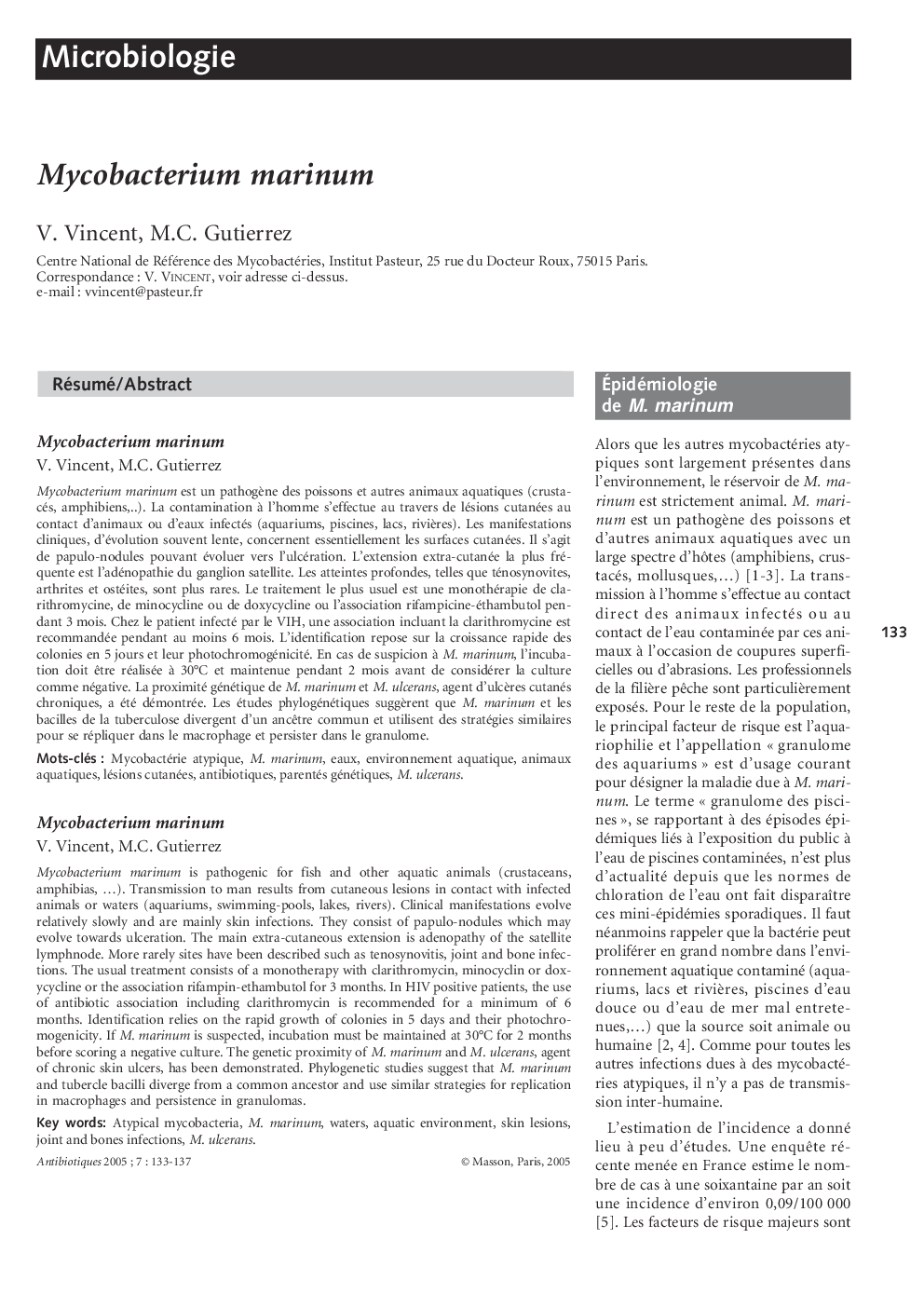| Article ID | Journal | Published Year | Pages | File Type |
|---|---|---|---|---|
| 9275296 | Antibiotiques | 2005 | 5 Pages |
Abstract
Mycobacterium marinum is pathogenic for fish and other aquatic animals (crustaceans, amphibias, â¦). Transmission to man results from cutaneous lesions in contact with infected animals or waters (aquariums, swimming-pools, lakes, rivers). Clinical manifestations evolve relatively slowly and are mainly skin infections. They consist of papulo-nodules which may evolve towards ulceration. The main extra-cutaneous extension is adenopathy of the satellite lymphnode. More rarely sites have been described such as tenosynovitis, joint and bone infections. The usual treatment consists of a monotherapy with clarithromycin, minocyclin or doxycycline or the association rifampin-ethambutol for 3 months. In HIV positive patients, the use of antibiotic association including clarithromycin is recommended for a minimum of 6 months. Identification relies on the rapid growth of colonies in 5 days and their photochromogenicity. If M. marinum is suspected, incubation must be maintained at 30°C for 2 months before scoring a negative culture. The genetic proximity of M. marinum and M. ulcerans, agent of chronic skin ulcers, has been demonstrated. Phylogenetic studies suggest that M. marinum and tubercle bacilli diverge from a common ancestor and use similar strategies for replication in macrophages and persistence in granulomas.
Keywords
Related Topics
Health Sciences
Medicine and Dentistry
Infectious Diseases
Authors
V. Vincent, M.C. Gutierrez,
